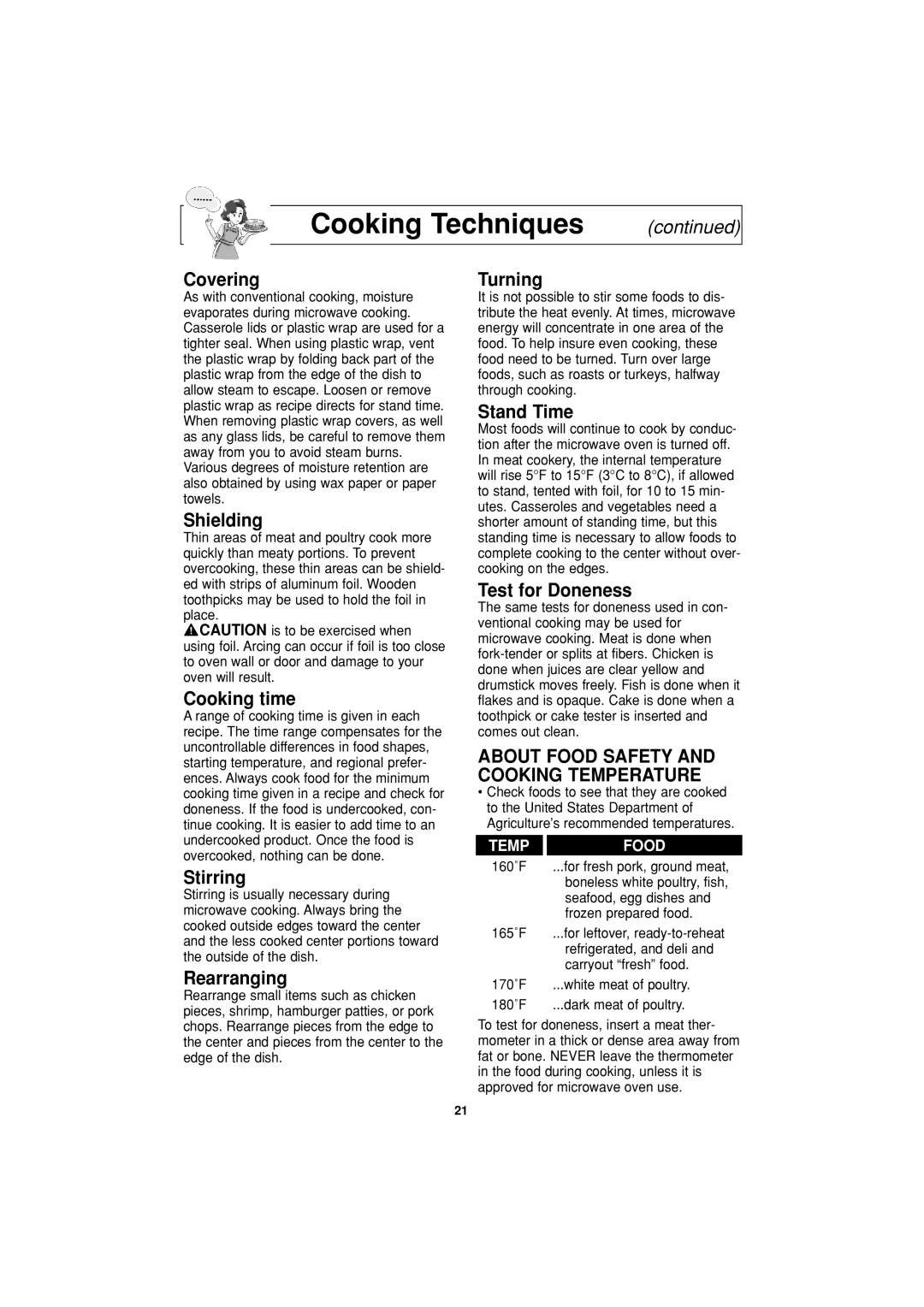NN-S334 specifications
The Panasonic NN-S334 microwave oven is a compact and efficient kitchen appliance designed for those who seek reliability and a variety of cooking options. Ideal for small kitchens or limited countertop space, this model combines a sleek design with advanced technology aimed at providing a versatile cooking experience.One of the standout features of the NN-S334 is its Inverter Technology. Unlike traditional microwaves that use a mechanical timer to cycle on and off while heating, the Inverter Technology provides a continuous stream of cooking power. This ensures that food is heated evenly and offers consistent results, preserving the texture and flavor of meals without overcooking or drying them out. This feature is particularly advantageous for delicate items like fish, sauces, or even cooked leftovers that require gentle reheating.
The NN-S334 also boasts a generous 1.2 cubic feet capacity, which is ample enough for cooking larger dishes, while still maintaining a compact footprint. The turntable system allows for uniform cooking and ensures that food is turned for even heating, further enhancing the cooking performance. With a maximum power output of 1000 watts, this microwave can handle a wide range of cooking tasks, from defrosting frozen meats to steaming vegetables.
In terms of user interface, the Panasonic NN-S334 features a user-friendly control panel equipped with both one-touch controls and numeric keypad options. This allows for easy access to pre-programmed cooking settings, making meal preparation quick and efficient. Options include settings for popcorn, reheat, and defrost, which take the guesswork out of cooking times and power levels.
The exterior design of the NN-S334 is both modern and stylish, available in a sleek stainless-steel finish that fits seamlessly into a variety of kitchen aesthetics. Additionally, the interior features easy-to-clean materials, further enhancing user convenience.
Overall, the Panasonic NN-S334 microwave oven combines innovative technology, practical features, and a stylish design, making it an excellent addition to any kitchen. Whether you are reheating leftovers, defrosting ingredients, or preparing quick meals, this microwave delivers quality performance with every use.

